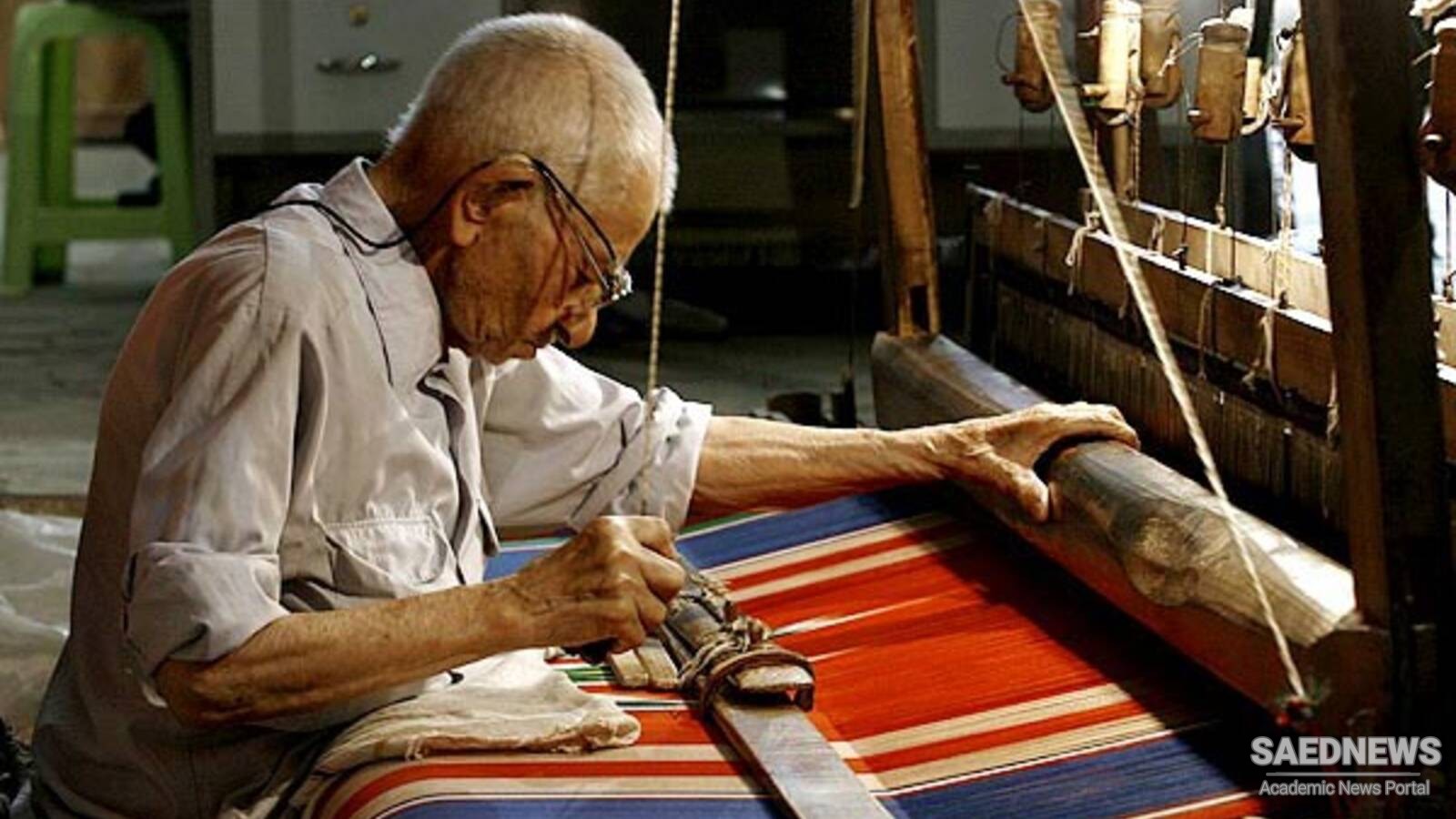But the most important factor that affected the textile industry of Yazd was that this city was located along the Silk Road, a privilege that allowed them to trade their products easily. Darayi Bafi is one of the subcategories of the traditional textile industry of Yazd. Icut is a Malayan word with the meaning of “to tie and dye”, but in Farsi it is called Darayi and is an old technique for painting a fabric. In Darayi, the yarns are dyed before they are woven into fabrics. In the past, natural pigments were used to dye the yarns, for example, Woad produced blue, Rubia and Cochineal produced red, tree barks and flowers produced yellow and minerals and soil was used to produce black pigments. Today these sources are rarely used and have been replaced by chemical colors.
Some consider the Darayi to have originated from Indonesia. The oldest remaining piece of Darayi belongs to Egypt and goes back to the 11th century. There are paintings on the walls in the northwest of India that show women wearing Icut fabrics. But in Iran, these fabrics were woven from a long time ago and their history in Yazd is known to be eight hundred years. There are two kinds of Icut: “Tar” or warp Icut, and “Pud” or weft Icut. In case of wrap Icut, then wrap yarns are colored before the weaving process and then are trenched over the loom. The patterns are then created during the weaving process. In the second technique, both wrap and weft yarns are colored before the weaving. Naturally, the weft Icut is more elaborate and valuable.
The Darayi fabrics are usually made with the width of ninety centimeters and height of about thirty centimeters and are finally cut depending on their usage. Until recent years silk yarns were used as both wraps and wefts of these fabrics, but today yarns such as viscose are used as the wraps, and synthetic silk or viscose rayon filaments are used as wefts. Scarves, beddings, tablecloths and bundles are some of the usages of Darayi.


 Masjed-e Jame of Yazd
Masjed-e Jame of Yazd














































